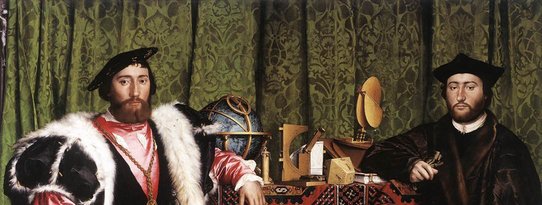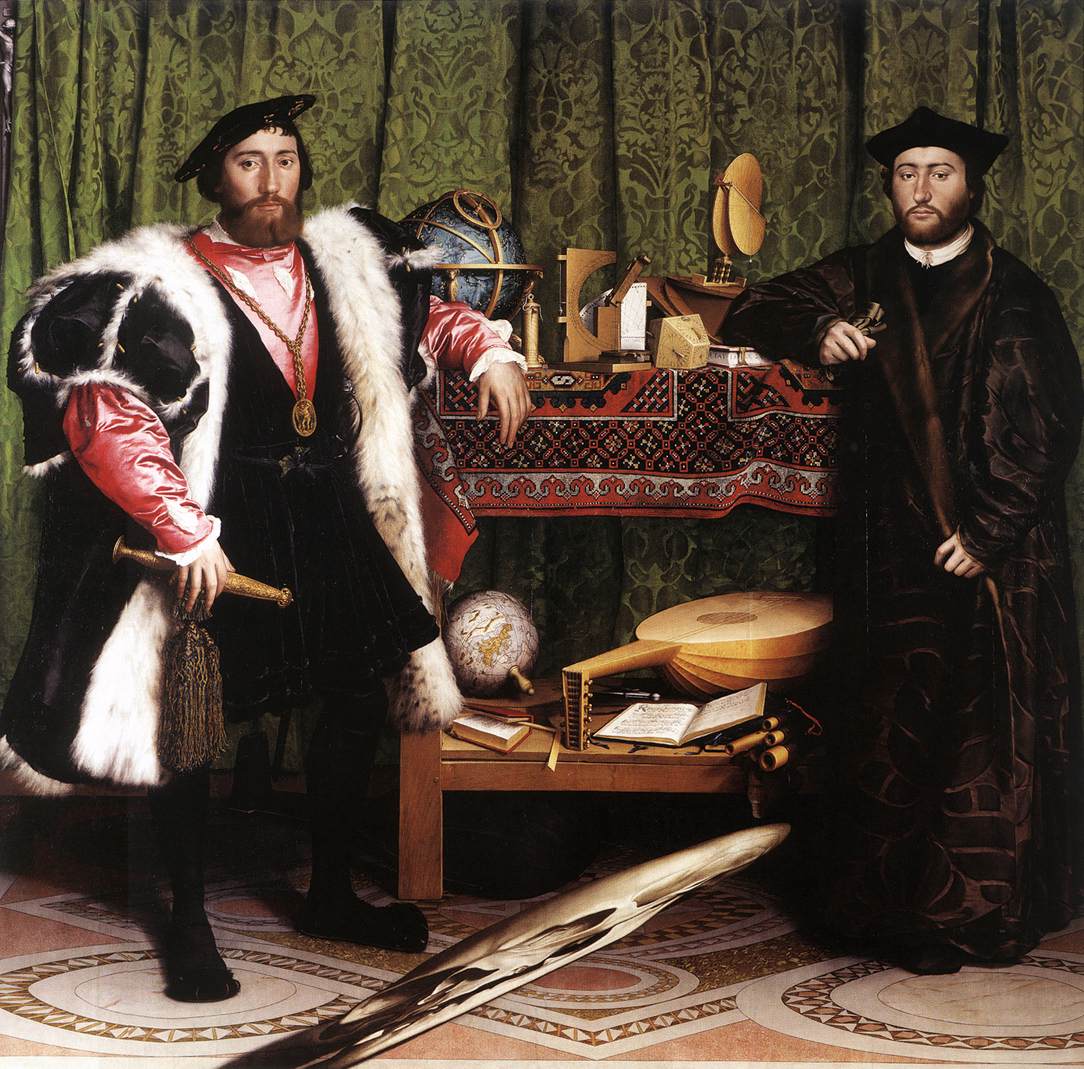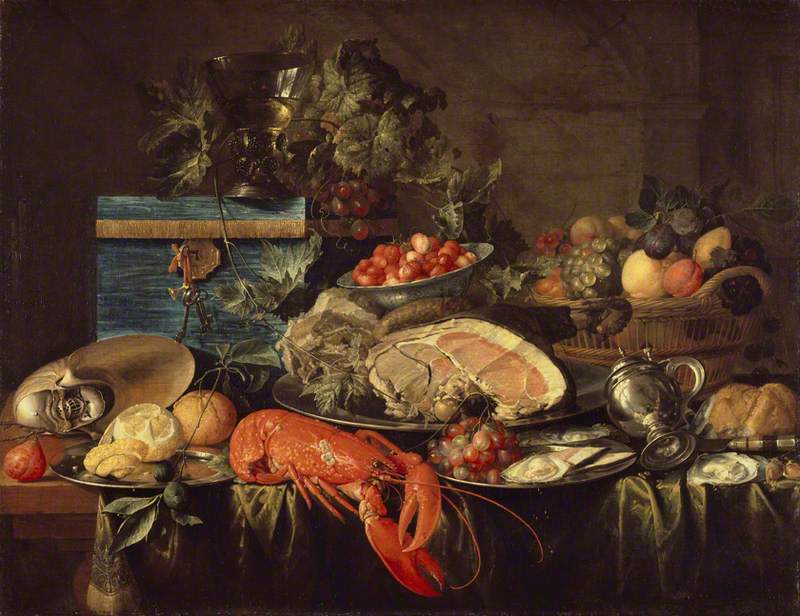John Berger–an English art critic, in “Ways of Seeing”, has a thesis that there is an analogy between possessing and the way of seeing, mainly related to the possession of oil painting. At the first emergence of oil painting, in the 15th century, the purpose of this painting is not primarily to fulfill the desire to beauty but to serve the owner’s way of seeing. Berger follows Lévi-Strauss, “collection of paintings can confirm the pride and amour-propre of the collector”. That is why patron’s houses are often decorated with paintings that can portray how they see the world, how they recognize their wife or daughter, what is his favorite lifestyle, and which country that they have conquered.
Let’s turn to see a painting entitled “Two Ambassadors” (1533) by Hans Holbein. Hans Holbein (1497/8-1543) is a German born painter that traveled across Italy, France, and finally settled in England. “Two Ambassadors” shows two men standing in front of a desk full of scientific equipment. These pieces of equipment are related to the exploration of the ‘new world’ at that time. Their outfits from the hat, coat, to shoes, suggest that they are from middle-high class society. Under the desk, there are a little globe, music instrument, a hymn book, and an open book, supposedly as a scientific book. All of this stuff represents their interest and taste. As Berger says, “the globe is linked to route of slaves, herbs, and spices trading from other continents to Europe”. Colonialism converts colonized people to Christianity and bring them to the scientific approach to convince that European Civilization is the best all over the world.
Berger also finds that the painting of still life and land property serves the same purpose. The aims of these paintings are to confirm the owner’s wealth and lifestyle. The “Still life with Lobster”(1643) by Jan Davidsz. de Heem–a Dutch painter, illustrates various dishes from meat, oyster to some fruits. It implies how rich the variety of dishes that the owner has.
“Charles II Presented With a Pineapple”, (c.1676), from the collection of National Trust, depicts Charles II standing in front of his garden with the palace as the background. His gardener–John Rose presents a pineapple to the king.
Both of these paintings not only affirm the social status, prestige, and pride of the figure, but also the spectator-owner.
***
#vacationstyle on Instagram
Now, it is not surprising if we find many photos scattered on Instagram that show property and lifestyle to affirm the prestige of the account owner. I try to search #vacation or #vacationstyle on Instagram and find various photos from a private villa, private yacht, quiet beach, swimming pool to luxury swimsuit.
Meghan M. Gallagher (2015), argues that Instagram post plays a role that is the same as the commissioned oil painting in the 15th century, they were built to construct a glamorous figure through visual signs and symbols. Although six centuries-long has passed, but images still serves the same purpose to “establish personal wealth and power”.
Finally, these images seduce spectators to consume more and more, and never end. It does not only affect how the spectator sees the wealth, but also caused excessive wealth accumulation that will lead to greater economic inequality in society.



